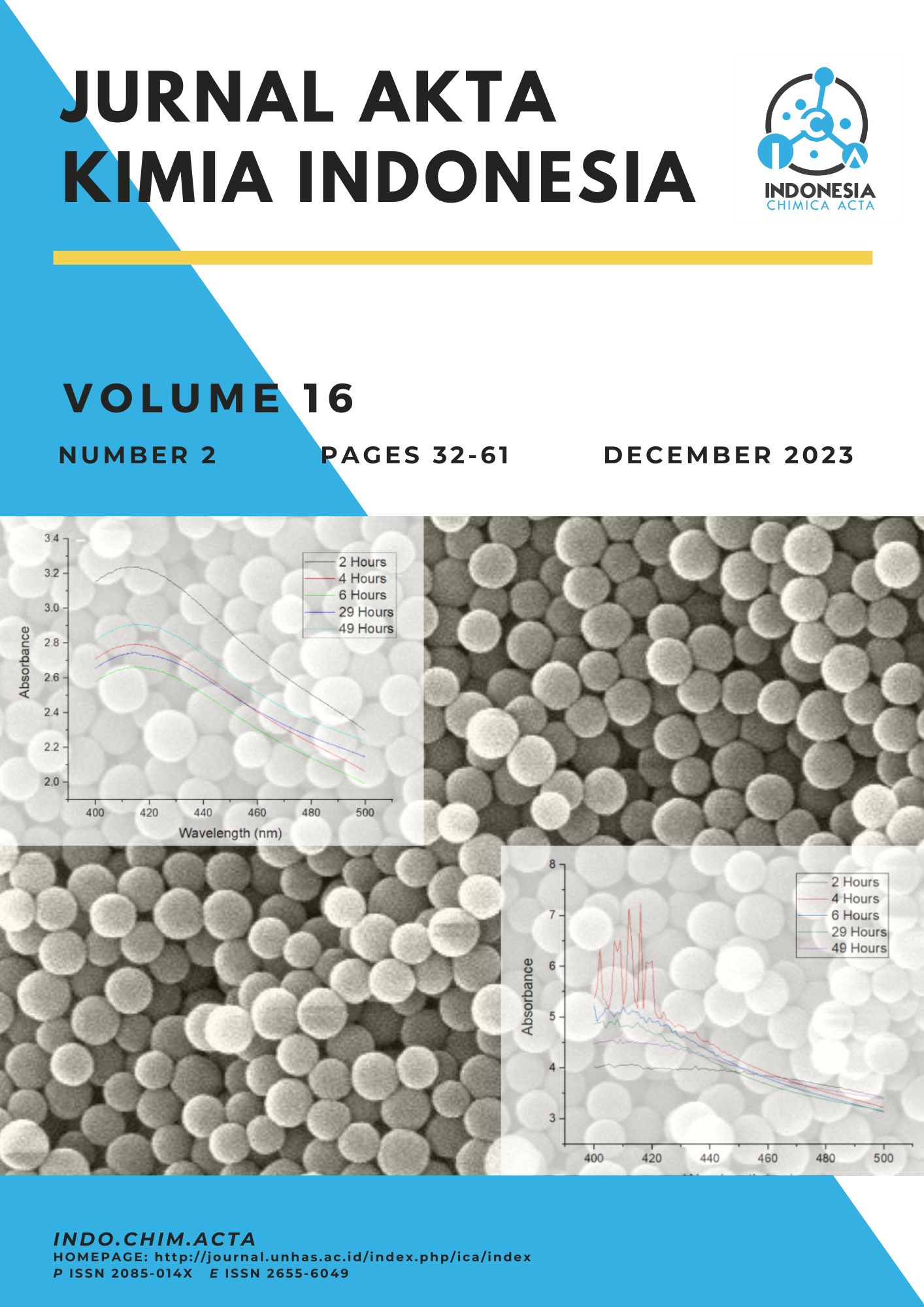Main Article Content
Abstract
The utilization of methylene blue dye in the textile industry can have a significant environmental impact due to its high toxicity. To address this issue, a study was conducted on the photodegradation of methylene blue dye using silver nanoparticles (AgNP) synthesized with marigold (Tagetes erecta) flower extract as a bioreducer. This article reports on the synthesis of AgNP and its application in the photodegradation of methylene blue dye. The synthesis of AgNP involved the reduction of AgNO3 with marigold flower extract. Different ratios of marigold flower extract to AgNO3 solution (0.01 M) were used: 1:9, 2:8, 3:7, 4:6, and 5:5. The formation of AgNP was monitored at various time intervals using UV-Vis spectroscopy. The best AgNP sample was measured using a Particle Size Analyzer (PSA). The research results indicated that the optimal conditions were achieved at a marigold extract to AgNO3 ratio of 2:8, with the UV-Vis spectrum showing a peak at a wavelength of 411 nm. The optimum conditions for photodegradation were as follows: AgNP volume of 15 mL, irradiation for 30 minutes, and pH 4. Under these conditions, photodegradation of methylene blue dye achieved a reduction of up to 72.46% from the initial concentration of 100 ppm.
Article Details

This work is licensed under a Creative Commons Attribution-ShareAlike 4.0 International License.
How to Cite
Suprihatin, I. E. ., Antariksa, N. K. P. ., Kunti Sri Panca Dewi, I. G. A. ., Dewi Lestari, G. A. ., & Intan Wahyuni, P. M. . (2023). Synthesis of Silver Nanoparticles Using Marigold (Tagetes erecta) Flower Extract for Photodegradation of Methylene Blue Dye. Jurnal Akta Kimia Indonesia (Indonesia Chimica Acta), 16(2), 32-37. https://doi.org/10.20956/ica.v16i2.28376
